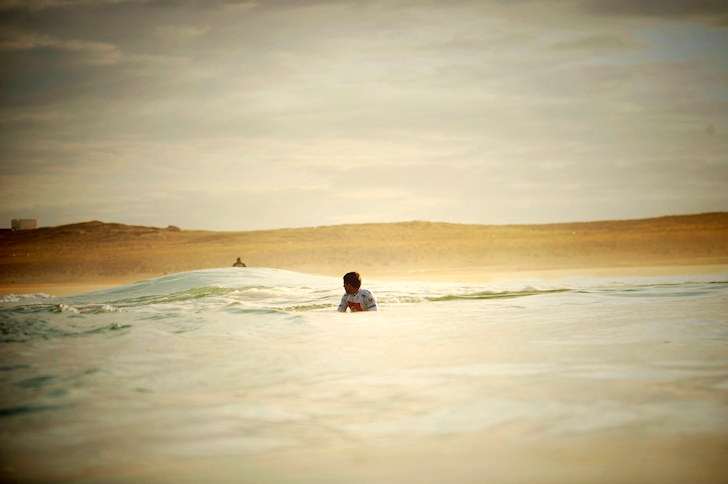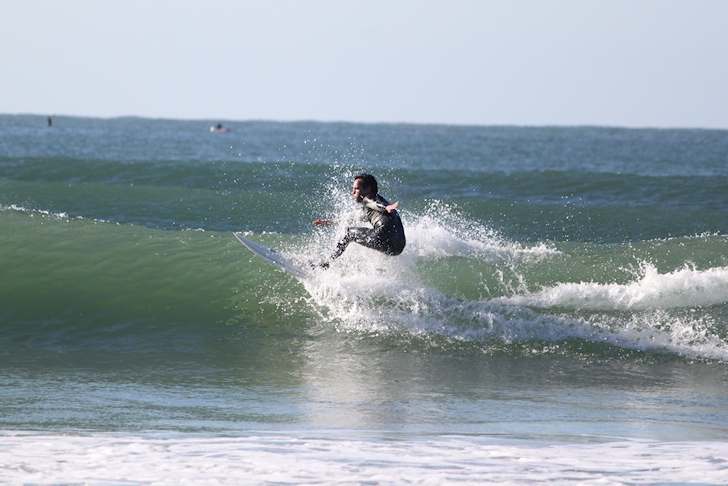What would you say was the biggest mistake you ever made while surfing? The question probably brings to mind a savage wipeout, hold down, or injury.
After all, you might think, the only way to know when you've made a mistake in the water is when something goes wrong.
While it's true that there are lots of factors that can add up to a scary situation in the water, there are also mistakes that don't result in catastrophe.
Plenty of common mistakes people make while surfing are responsible for much more mundane things, such as poor experiences, fewer waves caught, and slower progress overall.
"A life spent making mistakes is not only more honorable but more useful than a life spent doing nothing," the acid-witted hardman and playwright George Bernard Shaw once said.
For surfers, this truism lies close to the heart, but we still want to improve. Here's what you could be doing wrong.
Before Your Board Even Touches The Water
Not honing your swimming skills
Getting thrown, rolled, pounded, separated from your board. It happens.
Not preparing for the unexpected in the water is like going into a cooking competition without food to cook. Strong swimming skills are basic, 101-style must-haves.
No one should even attempt surfing without them. Swim on flat days to keep your capabilities up.
Failing to accurately assess conditions before paddling out
Yes, ocean behavior can be unpredictable, but nine times out of ten, it's remarkably reliable.
Learning to surf forecast is easy and interesting and will make a massive difference to your surf experiences.
Learn about the importance of the swell period and how wind and swell work together to create great (or poor) waves.
Take time each day to really pay attention to conditions before deciding to paddle out. At the very least, consult SurferToday.
Wrong board
Make sure the board you're using is not only the right one for your weight, size, and capability but also that it's right for the type of waves you're going to be catching.
Not eating
Pretty obvious here, but you're going to burn a lot of energy out there, even on easy-going days. Fill up on fuel food, such as proteins and healthy carbs.
Stay hydrated with fresh fruits and veggies, as well as fresh water and sports drinks.
Paddling Out
Not training to strengthen your paddling
Most of your time in the water is spent paddling, and a weak paddle means no stamina and possibly lost waves due to muscle fatigue.
Establish a training regime that conditions and strengthens the shoulders, spine, and upper arms, as well as the core and lower body.
Not knowing where you're going
Ensure you paddle out wide of the whitewater rather than going through it and that you stay clear of other surfers' paths.
Once you make it out, your skill level will determine where you should be in the lineup. You then need to know where you need to be in order to catch a wave.
This is the place where the wave is just lifting into its steepest, breaking form.
Paddle about five meters beyond that spot, enough distance for a few good paddles as you make for your wave.

In the Water
Incorrect position on the board
When you're paddling into a wave, the board needs to be weighted towards the nose for gravity to help you catch it.
This means you need to lie further forward on the board than you think.
Bad paddling/timing
You need to be moving fast enough that you stand a chance of matching the speed of the wave when it lifts you.
Otherwise, purling happens. To do that, you need to be paddling as early as you can once you've spotted your wave.
Paddles need to be strong and deep. Often neglected is the last paddle, or "push" paddle.
This happens just after the wave starts to lift you, helping to launch you onto the wave face and ensure you don't get sucked over the falls.
Unfocused pop-ups
In the heat of the moment, many a surfer has experienced a ruined ride after a poorly executed pop-up.
Don't use your knees to get to your feet; by the time you're standing, your weight won't be centered correctly for the momentum of the wave, and you'll purl or sink the rail.
Pop-ups need to live up to their name. They should be fast and precise. There's no shame in continually practicing at home or on the beach.
Feet in the wrong place
Ideally, you want your pop-up to place your feet exactly where they need to be to have control over the board.
Your front foot should almost always be dead center on the board, with the outer arch facing toward the nose.
The back foot should be parallel to the front, sitting directly over the front fin(s). Anywhere else, and control is lost.
Misunderstanding your center of gravity
Surfers often panic at the loose, squirrelly sensation of the board and react with a rigid, upright body position and forward-facing shoulders.
This lessens control and leads to wipeouts. Instead, you should always crouch low, bending from the hips (not the shoulders), and use your knees and hips to make adjustments.
Shoulders should follow the line of the board.
Not looking at where you're going
Don't look at your board. Not when you're paddling (eyes forward, head up), and not when you take off and get going (look at the part of the wave you want to be traveling to).
Your eyes are your body's natural guide. Where you're looking is where you're going, so keep your gaze over the front shoulder, focusing on your line.
Understanding and correcting these common mistakes is key to becoming a better surfer.
You'll never be flawless, but you can work to ensure progress that is knowledgeable and efficient.
As Gary Sirota once said, "There are no more committed people on the planet than surfers. We fall down a lot."
"We turn around, paddle back out, and do it over and over again. Unlike anything else in life, the stoke of surfing is so high that the failures quickly fade from memory."
